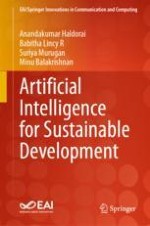2024 | OriginalPaper | Buchkapitel
Crisis Assessment Through Satellite Footage Using Deep Learning Techniques for Efficient Disaster Response
verfasst von : Anandakumar Haldorai, R. Babitha Lincy, M. Suriya, Minu Balakrishnan
Erschienen in: Artificial Intelligence for Sustainable Development
Verlag: Springer Nature Switzerland
Aktivieren Sie unsere intelligente Suche, um passende Fachinhalte oder Patente zu finden.
Wählen Sie Textabschnitte aus um mit Künstlicher Intelligenz passenden Patente zu finden. powered by
Markieren Sie Textabschnitte, um KI-gestützt weitere passende Inhalte zu finden. powered by
